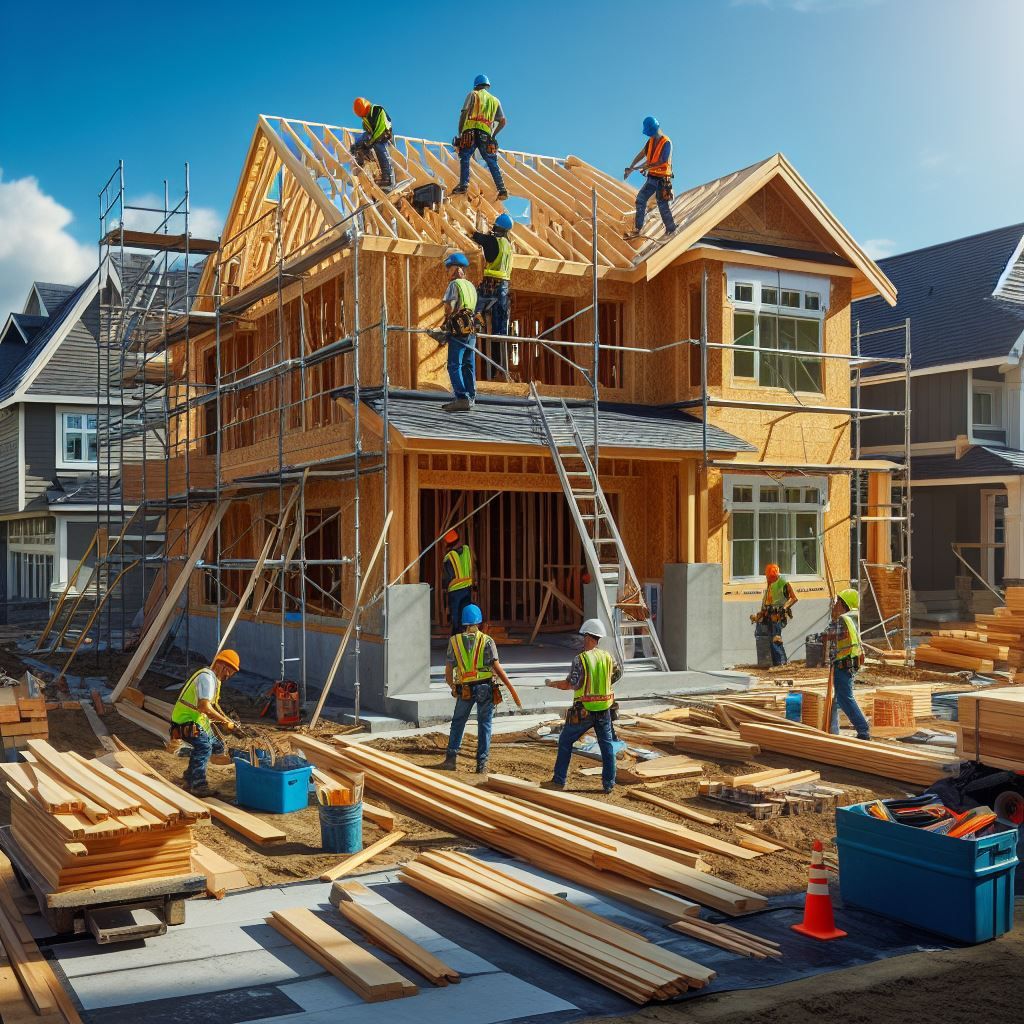Table of Contents
- Introduction
- Key Takeaways
- Breakdown Cost of Building a New House
- Benefits of Building a New House
- Breakdown Cost of Renovating an Old House
- Benefits of Renovating an Old House
- Breakdown Cost of Home Purchase
- Benefits of Purchasing a Preowned House
- Comparison: Renovating, Purchasing or Constructing?
- Practical Guides and Checklists
- Local Market Analysis
- Expert Opinions on Home Ownership Options
- Conclusion
- References
Key Takeaways
- Building a new house allows for customization and modern energy efficiency but can be a time-consuming and costly process.
- Renovating an old house can preserve its unique character and could potentially be more cost-effective, yet unexpected issues can lead to increased expenses.
- Buying a preowned house can be a quick and straightforward process, but you may have to compromise on design and layout.
- The cost of each option can vary significantly depending on location, size, design, and market conditions.
- It's essential to consider your lifestyle, preferences, and budget when deciding between building a new house, renovating an old one, or buying a preowned house.
- Regardless of the path you choose, having a clear plan and budget can help prevent unexpected costs and delays.
- It's important to consult with industry experts or professionals before making your decision to understand all the potential costs and challenges.
- Each option has its benefits, so the right choice depends on your personal circumstances and what you value most in a home.
- This guide provides a detailed comparison of these three options to help you make an informed decision.
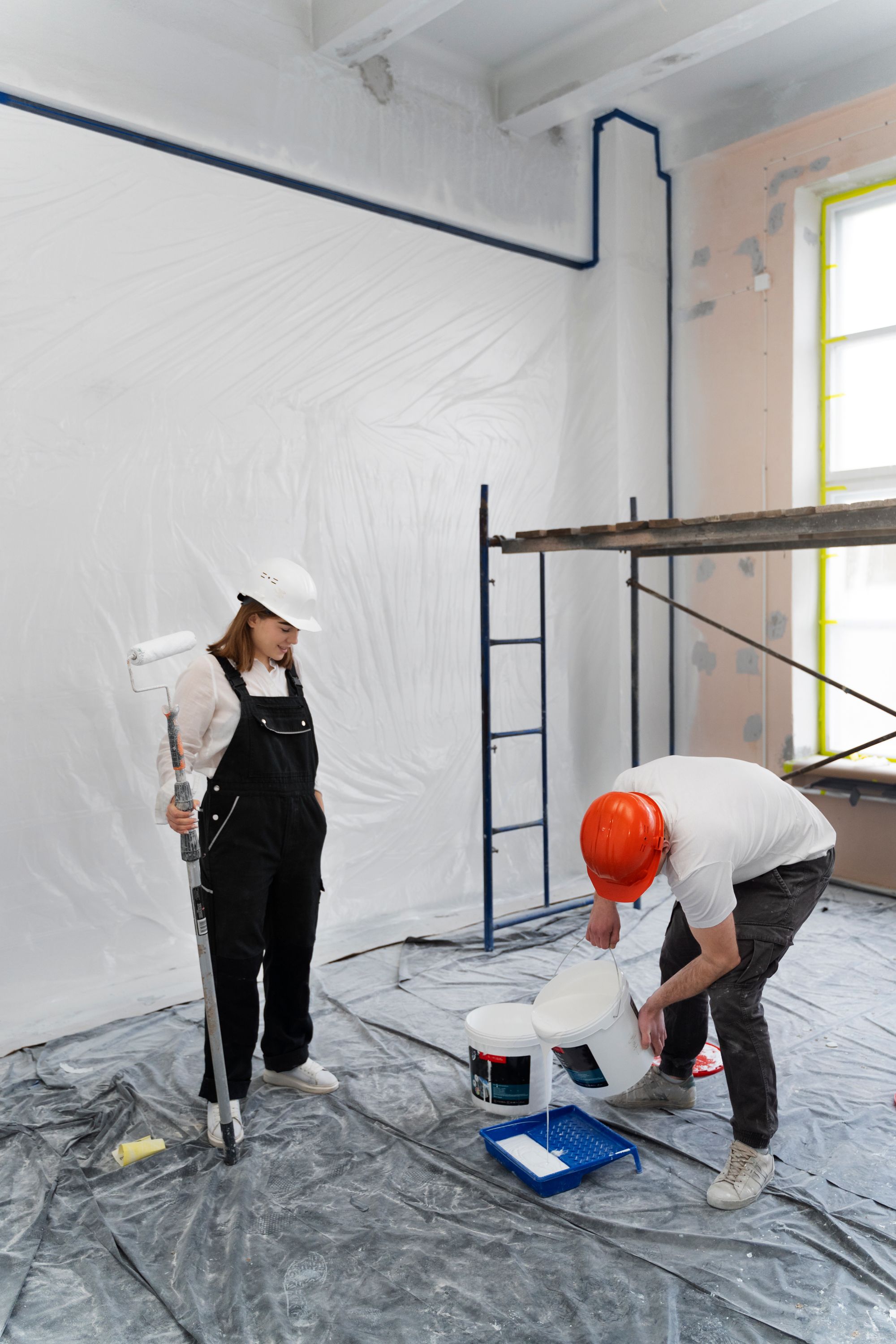
Introduction
Picture this: you're ready for a change of scenery, a place you can call yours, a space that reflects your personality. The question is, what's the best way to achieve this? Should you embark on the exciting journey of building a new house from scratch, tailored to your unique specifications? Perhaps the charm of renovating an old house, breathing new life into it while preserving its rich history, appeals to you. Or maybe, the practicality of buying a preowned house, ready to move in without the fuss of construction or renovation, sounds just right.
Each option has its merits and pitfalls. Building a new house offers a blank canvas, but it can be a slow and costly process. Renovating an old house allows for customization while preserving character, yet unforeseen problems can lead to spiraling costs. Buying a preowned house is quick and straightforward, but you might have to compromise on design and layout.
So, what's the right choice for you? How do you navigate the complexities of each option and make an informed decision that suits your lifestyle, preferences, and budget? This comprehensive guide aims to unravel these mysteries, providing you with expert insights to make your homeownership journey less daunting. Buckle up and let's explore!
Breakdown Cost of Building a New House
Building a new house is a thrilling prospect, offering the chance to design your dream home from scratch. However, it's a project that requires a significant financial outlay. Here's a detailed breakdown of the costs you can expect, peppered with real-life examples for clarity.
Land cost
The first step in building a new house is acquiring a plot of land. The cost of land varies greatly depending on the location. In a major city, for instance, a small plot could cost upwards of $200,000, whereas in rural areas, you could find larger plots for less than $50,000.
Design and planning
Once you have your land, you'll need to design your house. This process involves architects, who charge between 5 to 15% of the total construction cost. For a house costing $300,000 to build, architectural fees could range from $15,000 to $45,000. Furthermore, planning permission and building regulations approvals add to this cost.
Construction costs
These costs form the bulk of your budget when building a new house. They include labor and materials. The national average cost to build a house is around $150 per square foot. For a 2,000 square foot house, that's $300,000 in construction costs alone.
Utilities
If your land doesn't already have access to utilities like electricity, water, and sewerage, you'll need to pay for connections. Depending on the distance from the main lines, this could cost between $10,000 and $30,000.
Interior finishes
This category includes everything that makes the house livable and comfortable such as flooring, painting, kitchen and bathroom fixtures, lighting, doors, and windows. These costs can vary greatly depending on the quality and luxury level of the finishes but generally run from 25-30% of the total construction cost.
Landscaping
The cost of landscaping your property can range from a few thousand dollars for basic designs to over $20,000 for more elaborate outdoor spaces with patios, pergolas, and mature plantings.
Contingency
It's wise to set aside a contingency budget for unexpected costs, usually around 10-20% of the total construction cost. This fund helps cover unexpected expenses that inevitably occur during construction, such as unforeseen ground conditions or changes to the design.
In total, for a 2,000 square foot house, you could be looking at a total cost of between $400,000 and $500,000, excluding the cost of land. Of course, these costs can vary significantly depending on the specific location, design, and size of the house.
Building a new house also requires a significant time investment. From the initial design phase to moving in, it could take anywhere from 1 to 2 years. It's essential to consider these factors when deciding if building a new house is the right choice for you.
To navigate the complexities of building a new house, it's highly recommended to seek professional construction advice for homeowners. Industry experts can provide valuable insights into cost-saving measures, help avoid common pitfalls, and ensure the construction process runs smoothly. Through careful planning and budgeting, building a new house can be a rewarding endeavor that results in a home perfectly tailored to your needs and preferences.
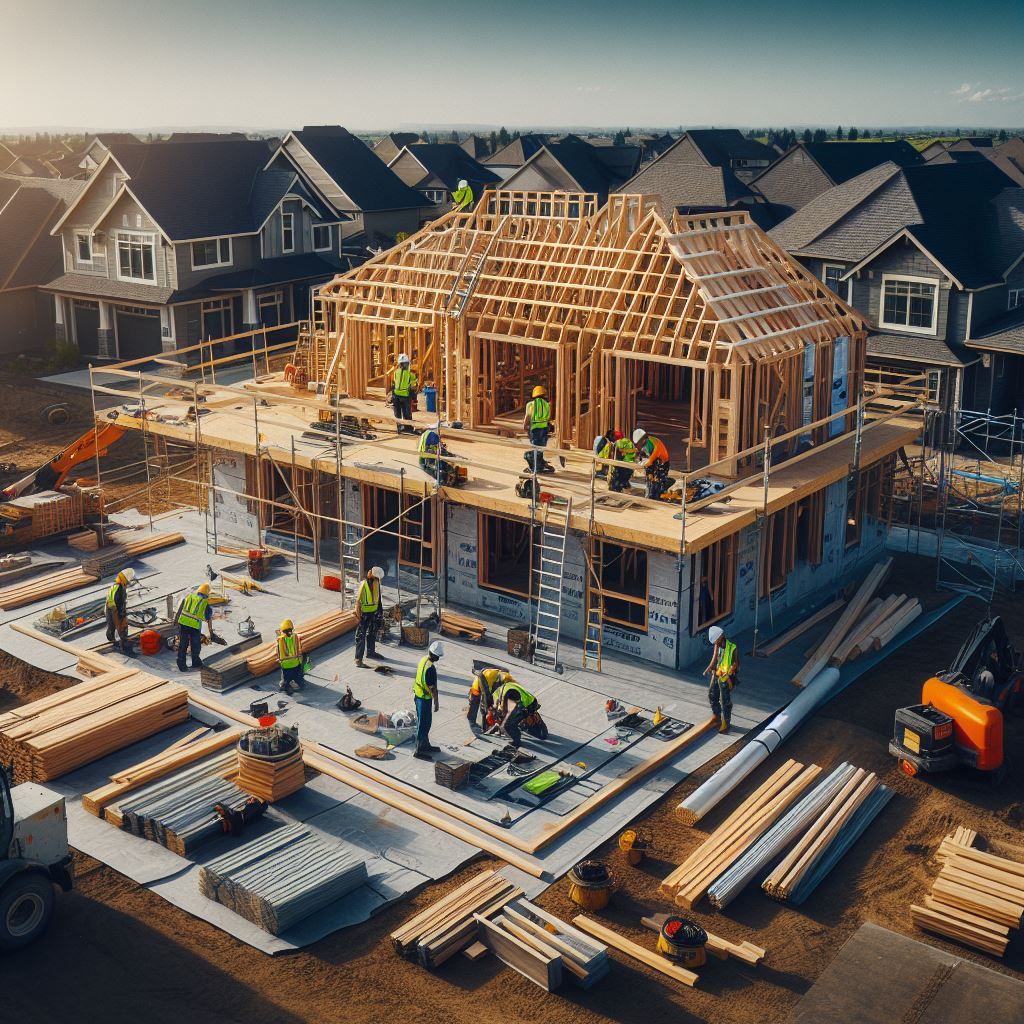
Benefits of Building a New House
Building a new house is an exciting journey that offers a host of benefits. Here are some of the key advantages, illustrated with real-life examples.
Customization
One of the biggest benefits of building a new house is the ability to customize every aspect of your home. You have control over the layout, the size of the rooms, the design, and the finishes. For example, Sarah and John, a couple from Seattle, decided to build their own house because they wanted a unique, open-plan living space with large windows to take advantage of the city views - something they couldn't find in existing homes on the market.
Energy Efficiency
New homes are often more energy-efficient than older or renovated homes, thanks to modern construction techniques and materials. When the Smith family in California built their new house, they incorporated solar panels, triple-glazed windows, and high-efficiency appliances, significantly reducing their energy consumption and monthly bills.
Fewer Repairs and Maintenance
A new house means new plumbing, electrical systems, appliances, and roof, which should be free of issues for several years. This was a significant factor for the Jones family in New York, who had previously spent thousands each year maintaining their old Victorian home. By building a new house, they were able to save on repair and maintenance costs.
Increased Resale Value
If you ever decide to sell, a newer home often has a higher resale value. Tom and Lisa in Florida experienced this firsthand when they sold their newly built house after living in it for only five years. The modern design and energy-efficient features were highly appealing to buyers, and they were able to sell the house for a profit.
Healthy Living Environment
New homes often have better indoor air quality because they are built with modern materials that have lower volatile organic compound (VOC) emissions. This was a deciding factor for the Green family in Denver, who have young children with allergies. By building a new house with low-VOC materials, they were able to create a healthier living environment for their children.
The process of building a new house, though potentially daunting, can offer many rewards. When choosing between new and renovated homes, consider these benefits. A new house can provide a customized, efficient, and healthy home that could save you money in the long run and offer a high return on investment. The prospect of creating a home that's uniquely yours, designed to suit your lifestyle and needs, can make building a new house an adventure worth embarking on.
Breakdown Cost of Renovating an Old House
Renovating an old house can breathe new life into a property with historic charm and character. However, the costs can add up quickly. Here's a detailed breakdown of the costs you can expect, supplemented with real-life examples.
Purchase Price
The initial cost is buying the property. This can vary widely depending on the location, size, and condition of the home. For example, an old house in need of renovation in a rural area might cost $100,000, while a similar property in a city might cost $500,000 or more.
Inspection
Before buying, it's smart to have a thorough inspection performed by a qualified professional. This can cost between $300 and $500 but can reveal potentially costly issues such as structural problems, outdated wiring, or a leaky roof.
Architect or Designer
If your renovation involves major structural changes, you might need an architect or designer. They typically charge a percentage of the total project cost, between 10-20%. For a $100,000 renovation, this could mean $10,000 to $20,000 in design fees.
Contractor
The general contractor will manage the renovation, including hiring and overseeing subcontractors, obtaining permits, and scheduling inspections. This typically costs around 10-20% of the total project cost.
Materials
The cost of materials can vary greatly depending on the quality and style you choose. A budget kitchen remodel might cost around $10,000 for materials, while a high-end remodel could cost $50,000 or more.
Labor
Labor costs can also vary, but a good rule of thumb is to budget around $25 to $50 per square foot for professional labor. For a 2,000 square foot house, this could mean a cost of $50,000 to $100,000.
Permits
Depending on the scope of your renovation, you might need permits for structural changes, electrical work, plumbing, or other aspects of your project. The cost of permits can vary by location and project size, but budget around $1,000 to $2,000.
Unexpected Costs
When renovating an old house, it's wise to set aside a contingency budget of 10-20% of the project cost to cover unexpected issues that arise.
In total, a major renovation of an old house might cost anywhere from $100,000 to $200,000 or more, not including the purchase price of the home.
Renovating an old house can be a complex and time-consuming process. It's essential to plan carefully, budget realistically, and expect the unexpected. Seek renovation tips from industry experts to help guide your project and potentially save you time and money. The effort can be well worth it though, resulting in a home that combines historic charm with modern amenities, tailored to your lifestyle and preferences.
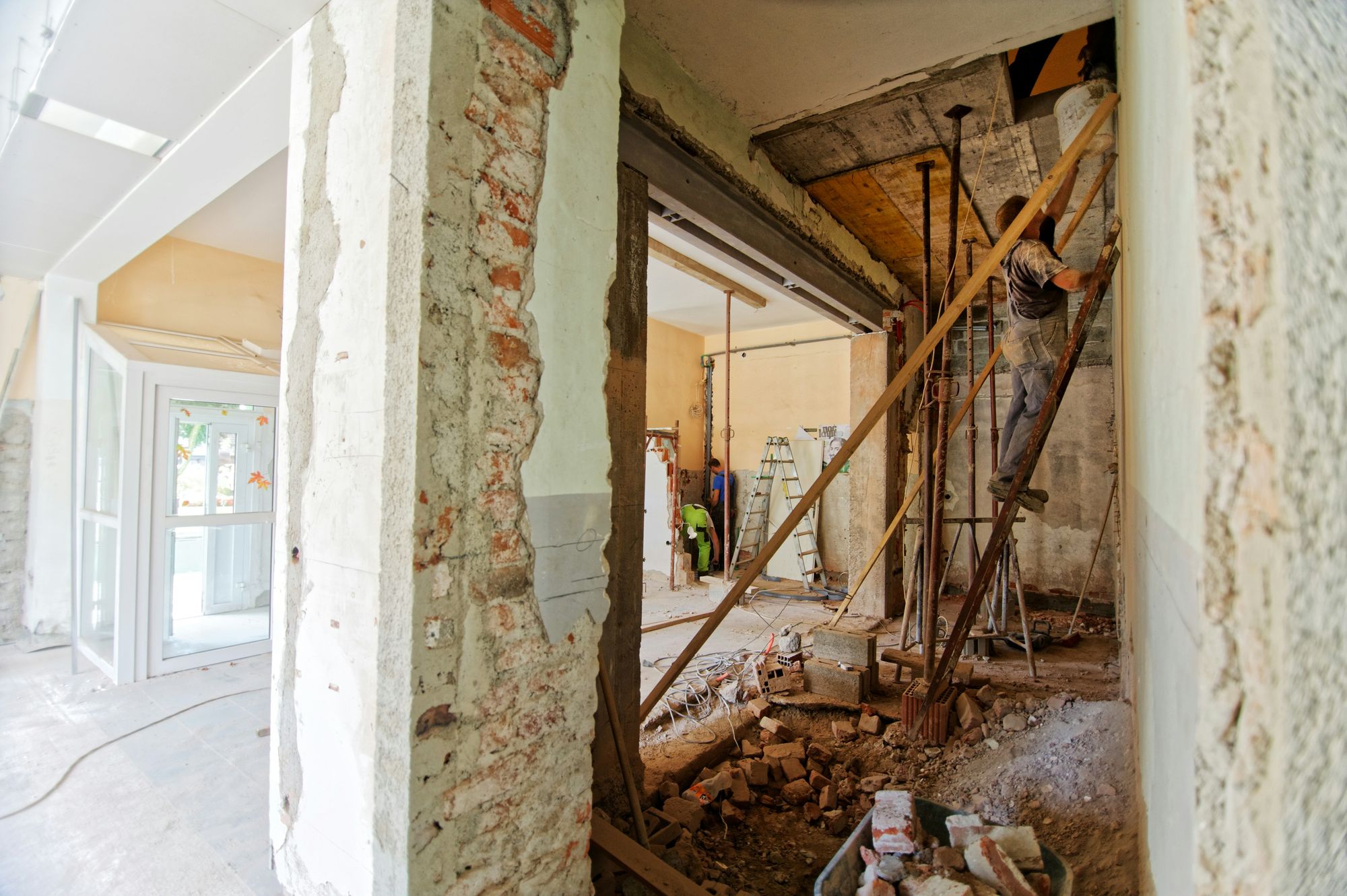
Benefits of Renovating an Old House
Renovating an old house can be a rewarding project that merges past charm with modern convenience. Here are some key benefits along with real-life examples.
Preservation of Historical Character
Old houses often have unique architectural details that are no longer common in new homes. By renovating, you preserve these features. For example, the Greens, a family in Boston, chose to renovate their Victorian-era home to maintain the original stained glass windows and ornate woodwork.
Location
Older homes are often located in established neighborhoods with mature trees and access to amenities. The Johnson family in Chicago chose to renovate an old house because it was located in a desirable school district close to downtown.
Cost-Effective
Renovating an old house can be more cost-effective than buying a new home, especially in expensive real estate markets. For instance, the Smiths in San Francisco were able to buy and renovate an old house for less than the cost of a comparable new property in the city.
Environmental Consideration
Renovating can be more environmentally friendly than building new, as it reduces the need for new materials and the waste generated by demolition. This was an important consideration for the environmentally-conscious Clark family in Portland, who renovated an old house using recycled and reclaimed materials.
Customization
While not as extensive as building a new home, renovating still allows for a significant degree of customization. The Petersons in New York were able to create a modern, open-concept living area within their old house, giving them the best of both worlds.
Increased Value
If done correctly, renovating an old house can significantly increase its value. This was the case for the Davis family in Los Angeles, whose renovated home saw a 50% increase in value, much higher than the average for their neighborhood.
When choosing between new and renovated homes, consider these benefits of renovating an old house. It can offer a unique blend of history and modernity, potentially at a lower cost than buying or building new. Renovating an old house allows you to create a home with character and charm, tailored to your needs and aesthetic. It's a project that, while challenging, can result in a uniquely personal and rewarding home.
Breakdown Cost of Buying a Preowned House
Buying a preowned house is a significant financial commitment. It involves a variety of expenses beyond just the listing price. Below is a detailed cost breakdown with real-life examples, along with expert insights on home acquisition.
Purchase Price
This is the most substantial expense. The national median list price for a preowned home in the U.S. is about $315,000, but this varies greatly depending on location and the size and condition of the home.
Down Payment
The down payment is usually between 5% and 20% of the home's purchase price. For example, on a $315,000 home, a 20% down payment would be $63,000. However, first-time homebuyers like the Johnson family in Ohio were able to put down just 5% ($15,750) using an FHA loan.
Closing Costs
These are fees related to finalizing the sale, and they typically range between 2-5% of the loan amount. For a $315,000 home with a $252,000 loan, the closing costs could be between $5,040 and $12,600.
Home Inspection
A home inspection costs around $300 to $500. The Smiths in Texas paid $400 for an inspection to uncover any hidden issues with their prospective home.
Appraisal
An appraisal, which verifies the home's value for the lender, typically costs between $300 and $400. The Williams family in Florida had to pay $350 for their home appraisal.
Homeowners Insurance
This cost varies based on location, home size, and coverage level. The average annual premium is around $1,200. The Browns in Colorado pay about $100 monthly for their coverage.
Property Taxes
These vary greatly by location. The national average is 1.1% of the home's value, but in New Jersey, where the Parkers bought their house, the rate is 2.44%, meaning they pay nearly $7,700 in property taxes annually on their $315,000 home.
Moving Costs
The cost of moving can range from a few hundred to a few thousand dollars, depending on the distance and the amount of belongings. The Martinez family in California paid approximately $1,000 for a local move.
Maintenance and Repairs
These costs can also vary, but a general rule of thumb is to budget 1-2% of the home's value annually. The Wilsons in New York set aside around $3,000 annually for potential maintenance and repairs.
In total, the initial costs when buying a preowned house can quickly add up to more than the purchase price alone. However, working with a real estate professional can help buyers navigate these costs. As the Thompsons in Illinois found, their realtor's insights were invaluable in understanding and planning for the full financial impact of their home acquisition.
Buying a preowned house is a significant investment, but with careful planning and budgeting, it can be a worthwhile endeavor. The pride of homeownership, the stability it provides, and the potential for future equity make it a solid investment for many families.

Benefits of Purchasing a Preowned House
Buying a preowned house can provide several advantages over new or renovated homes. Here are some key benefits, with real-life examples.
Cost-Effective
Preowned houses are often more affordable than new or renovated homes. For instance, the Johnson family in Ohio found that buying a preowned house saved them significantly compared to the prices of new constructions in the same area.
Established Neighborhoods
Older homes are typically located in established communities with mature trees and amenities, which new developments may lack. The Smiths in Texas were drawn to their preowned home by the charm and convenience of its established neighborhood.
No Wait Time
Buying a preowned house means you can move in immediately after closing, whereas building or renovating can take months or even years. The Williams family in Florida was able to relocate quickly for a job opportunity thanks to their preowned home purchase.
Negotiation Potential
With a preowned house, there's often more room to negotiate on price, especially if the property has been on the market for some time. This was the case for the Browns in Colorado, who were able to negotiate their preowned home's price down by 5%.
Solid Construction
Many older homes were built with high-quality materials and craftsmanship that have stood the test of time. The Parkers in New Jersey were impressed by the sturdy construction and charming details in their 1950s-era preowned home.
When choosing between new and renovated homes or a preowned house, consider these benefits. Buying a preowned house can be a cost-effective way to become a homeowner in an established community, with the added advantages of quick move-in times and negotiation potential.
While preowned homes may require some updates or repairs, many buyers find these projects manageable and even enjoyable. As the Wilsons in New York discovered, personalizing their preowned home over time became a rewarding endeavor that made their house feel truly like a home. Buying a preowned house is a decision that can offer both financial benefits and the intangible value of owning a piece of history.
Comparison: New Construction vs Renovation, Buying a Preowned House
When it comes to finding a new home, potential homeowners face three main options: new construction, renovation, or buying a preowned house. Each option comes with its own set of pros and cons.
New Construction:
Pros:
- Customization: Building a new home allows for complete customization. The homeowner can choose everything from the floor plan to the finishes.
- Energy Efficiency: New homes often incorporate the latest in energy-efficient technology, which can lower utility costs.
- Lower Maintenance: With everything brand-new, there is less likelihood of dealing with major repairs in the early years of ownership.
Cons:
- Cost: New constructions are generally more expensive than preowned or renovated homes.
- Time: It can take several months to over a year for a new home to be ready.
- Lack of Character: Unless intentionally designed, new homes may lack the unique charm and character of older properties.
Renovation
Pros
- Personalization: Renovating an old house allows homeowners to tailor the home to their needs while preserving the original character.
- Increased Value: If done correctly, renovations can significantly increase a home's value.- Environmental Consideration: Renovating can be more environmentally friendly than building new, as it reduces the need for new materials and waste generation.
Cons:
- Unforeseen Issues: Older homes can hide a host of problems like electrical issues, plumbing problems, or structural damage that may not surface until renovations start.
- Time and Stress: Renovations can be time-consuming and stressful, often taking longer and costing more than initially expected.
- Financing: Some lenders don't offer loans for renovations, or the terms might not be as favorable as for new or preowned homes.
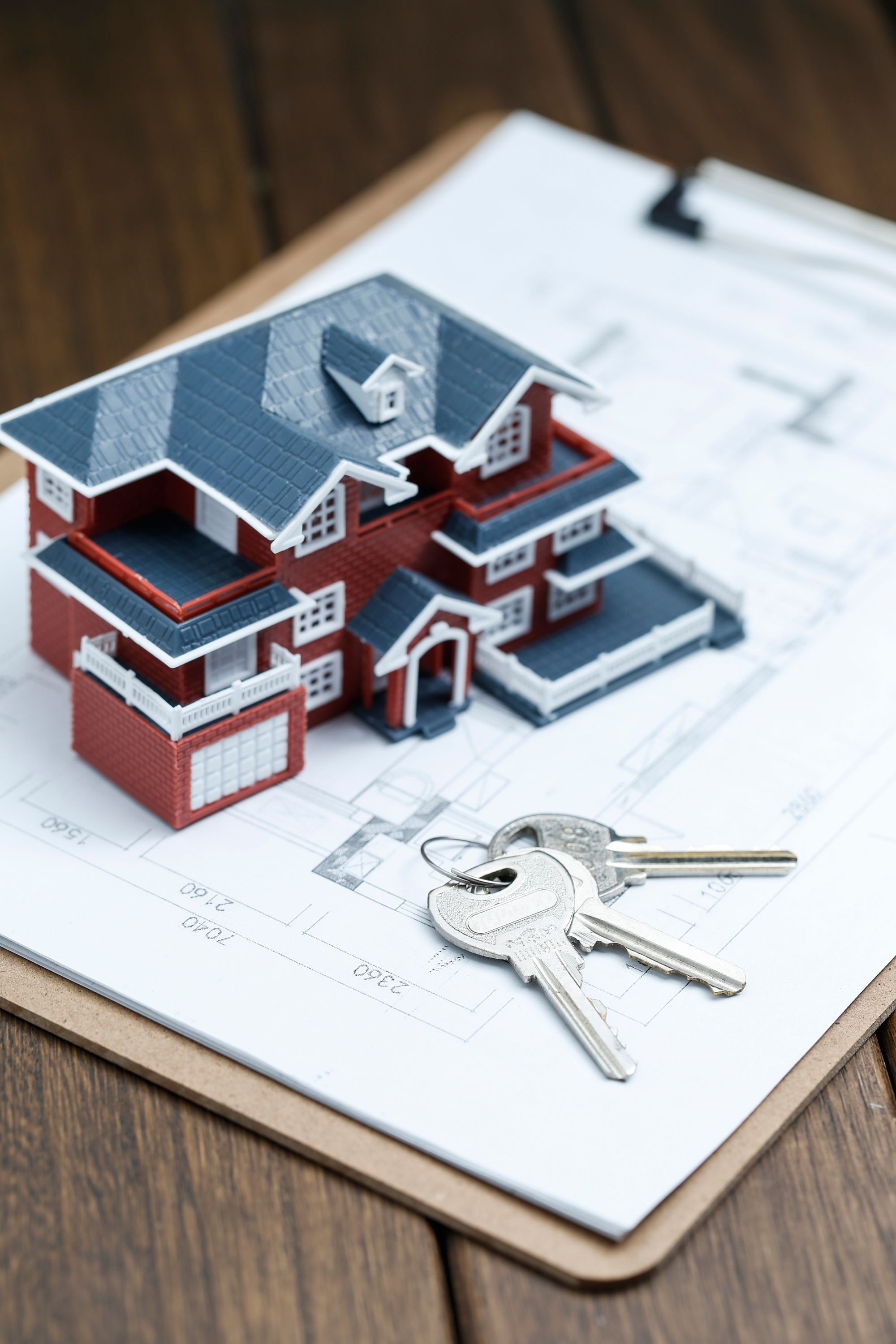
Buying a Preowned House
Pros:
- Cost-Effective: Preowned houses are often more affordable than new or renovated homes.
- Quick Possession: Buyers can move in immediately after closing, without the wait associated with construction or renovation.
- Established Neighborhoods: Older homes are typically in established communities with mature trees and amenities.
Cons:
- Potential Repairs: Preowned homes may require more maintenance or repairs than new or renovated homes.
- Outdated Features: The home may have outdated features or not be to the buyer's taste, necessitating further investment in updates.
- Energy Inefficiency: Older homes might lack modern, energy-efficient systems, resulting in higher utility bills.
In conclusion, each option—new construction, renovation, or buying a preowned house—has distinct advantages and disadvantages. The best choice depends on factors such as budget, time frame, personal preferences, and tolerance for potential challenges. New construction offers a fresh start and customization but comes at a higher cost and longer waiting time.
Renovation allows for individuality and potential value increase but can harbor unforeseen issues and stress. Buying a preowned house is often the quickest and most cost-effective route, but it may come with outdated features and potential for higher maintenance. In any case, careful consideration and thorough research will help potential homeowners make the best decision for their unique circumstances.
Practical Guides and Checklists
Building a New House
A detailed guide that walks you through the process of building a new home, from conception to completion. This guide includes:
- Timeline: A realistic timeline for each phase of construction, from land acquisition and design to construction and final inspections.
- Necessary Paperwork: A checklist of all permits, approvals, and legal documents required throughout the building process.
- Checkpoints: Key milestones to assess progress and ensure that the project stays on track and within budget.
Buying a Preowned House
This guide simplifies the home-buying process, outlining each step to take from house hunting to closing the deal. It covers:
- Timeline: A timeline that includes finding a real estate agent, viewing homes, making an offer, and closing the sale.
- Necessary Paperwork: A list of documents you'll need to secure financing, make an offer, and complete the purchase.
- Checkpoints: Critical decision points, such as home inspections and final walk-throughs, to ensure the property meets your expectations.
Renovating an Old House
- A comprehensive guide to planning and executing a renovation project, whether it's a minor update or a major overhaul. It includes:
- Timeline: Estimated timelines for planning, securing permits, completing the renovation work, and final inspections.
- Necessary Paperwork: Details on the types of permits and approvals needed for various renovation projects.
- Checkpoints: Moments to evaluate the renovation's progress, including after demolition, major installations, and finishing touches.
Checklist for Choosing Contractors
When selecting architects, builders, and contractors for your project, use this checklist to guide your decision:
- Experience and Specialization:
- How many years of experience do they have?
- Do they specialize in the type of project you're undertaking (new build, renovation, specific home styles)?
- Licenses and Insurance:
- Are they properly licensed for the work they're performing?
- Do they have liability insurance and workers' compensation insurance?
- References and Portfolio:
- Can they provide references from past clients?
- Do they have a portfolio of completed projects similar to yours?
- Communication and Professionalism:
- How do they communicate with clients during the project?
- Do they provide a detailed contract outlining the scope of work, timeline, and payment schedule?
- Cost and Budgeting:
- How do they handle budget overruns or unexpected costs?
- Can they provide a detailed, itemized estimate?
- Subcontractors:
- Who will be performing the work – their own team or subcontractors?
- How do they vet and choose their subcontractors?
- Warranty and Aftercare:
- Do they offer a warranty on their work?
- How do they handle post-project support or issues that arise after completion?
- Red Flags to Watch Out For:
- Unwillingness to sign a contract or provide a detailed estimate.
- Lack of communication or delays in responding to inquiries.
- Requests for large upfront payments or payment in cash.
- Negative reviews or unresolved complaints in their history.
By following these practical guides and checklists, you'll be better equipped to navigate the complexities of building, buying, or renovating a house, ensuring a smoother and more successful journey to homeownership.
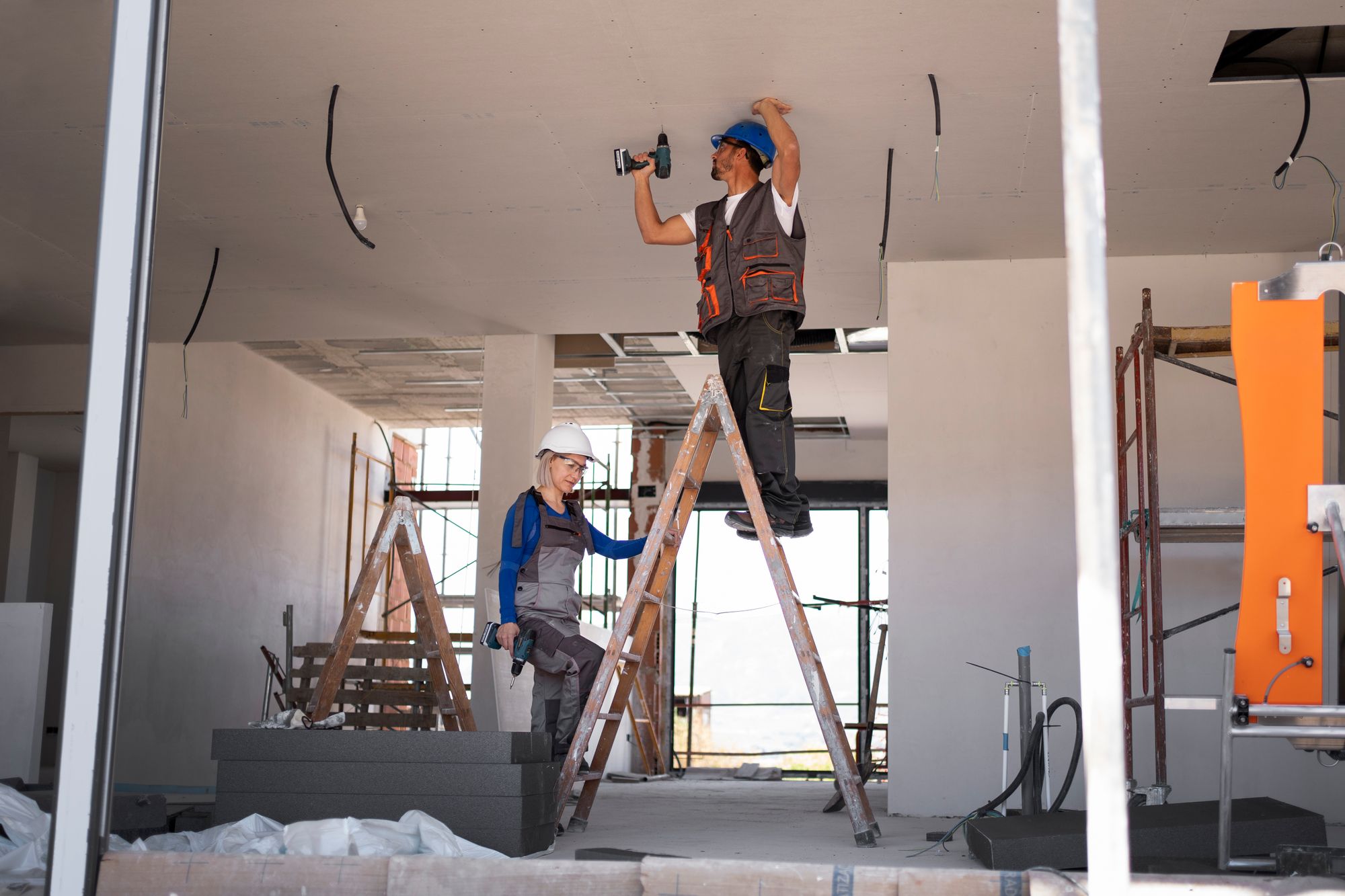
Local Market Analysis
In the dynamic realm of real estate, understanding the local market trends is crucial for making informed decisions on whether to build a new house, buy a preowned one, or undertake renovations. The cost-benefit analysis of each option varies significantly across different regions due to factors such as land availability, labor costs, and the age of existing housing stock.
For instance, in urban areas where land is scarce and expensive, renovating an existing property might offer better value, allowing homeowners to utilize space more efficiently and increase a property's worth. Conversely, in suburban or rural areas, where land is more readily available and affordable, building a new house could be a more cost-effective option, providing the opportunity to design a home that perfectly fits one's needs without the constraints of an existing structure.
It's also important to consider the housing market's condition in your region. In a seller's market, where demand outstrips supply, buying a preowned home may come at a premium, making building or renovating a more attractive option. Detailed market analysis, including average cost per square foot for new builds versus existing homes and renovation costs, can provide a clearer picture of what to expect financially.
Sustainability Focus
Sustainable building practices and renovations are not just good for the planet; they can also lead to long-term savings for homeowners. This section of the guide delves into how incorporating eco-friendly materials and energy-efficient designs from the outset can impact the overall costs and benefits of your project.
Materials such as bamboo flooring, recycled metal roofing, and low-VOC paints contribute to a healthier and more sustainable home environment. Energy-efficient designs, including passive solar orientation, green roofs, and high-efficiency HVAC systems, can significantly reduce utility bills over time. While the initial investment in these green technologies and materials might be higher, the return on investment through energy savings and increased property value can be substantial.
Local incentives for sustainable building, such as tax rebates and green energy grants, can further offset initial costs. This guide can provide readers with resources to find out what incentives are available in their area, making sustainable building practices more accessible and appealing.
Legal and Zoning Considerations
Navigating legal and zoning issues is a critical aspect of any construction or major renovation project. This section aims to shed light on the common legal hurdles homeowners may encounter, including zoning laws, building codes, and permits required for new constructions and renovations.
Zoning laws can significantly impact what you can build or modify on your property. For example, certain areas may have restrictions on building height, lot coverage, or even architectural style. Understanding these regulations before starting your project can help avoid costly mistakes and delays.
Building codes are designed to ensure the safety and health of occupants and must be strictly adhered to in any construction or renovation project. They cover a wide range of considerations, from structural integrity to fire safety and electrical systems.
Permits are a legal requirement for most new constructions and significant renovations. The process for obtaining permits can vary greatly between municipalities, so it's important to consult with local building authorities early in the planning process. This section can provide a general overview of the steps involved in obtaining permits and highlight the importance of factoring this into your project timeline and budget.
By offering a comprehensive guide on these aspects, homeowners can be better prepared for the complexities involved in building, buying, or renovating a home, making informed decisions that align with their goals and budget.
Expert Opinions on Home Ownership Options
When it comes to choosing between new construction, renovation, or buying a preowned house, expert opinions can provide valuable insights. Let's delve into the perspectives of experts in real estate, home construction, and renovation.
Real Estate Expert
According to Barbara Corcoran, a renowned real estate mogul, "Buying a preowned house in an established neighborhood often offers the best return on investment. Not only do you get the charm of a mature community, but these homes often appreciate more quickly." Corcoran emphasizes the financial benefits and the intangible value of established community connections when buying a preowned house.
Home Construction Expert
Bob Vila, a home construction and improvement expert, champions new construction for its customization and energy efficiency. "Building a new home allows homeowners to create a living space tailored to their specific needs and desires. Plus, with the latest in energy-efficient construction techniques, homeowners can save significantly on utility bills in the long run," Vila explains.
Renovation Expert
Nicole Curtis, a rehabilitation specialist and the star of "Rehab Addict," advocates for renovation. Curtis says, "Renovating an older home not only preserves its character, but it also allows homeowners to modernize the spaces to suit their lifestyle. Moreover, renovation is typically a more environmentally conscious choice as it reduces the demand for new materials and lessens waste."
However, all these experts agree on one thing: the best choice depends on the individual's circumstances, tastes, and budget. According to Corcoran, "While I often recommend buying preowned, I understand that every homebuyer is unique. Some will find their dream home in a new construction, while others will find it in a fixer-upper."
Vila adds, "If you're someone who enjoys the process of customization and doesn't mind waiting, then new construction could be the perfect fit."
And Curtis advises, "If you have a passion for preserving history and are willing to tackle the potential challenges that come with older homes, then renovation could be a rewarding journey."
In sum, the decision between new construction, renovation, and buying a preowned house is deeply personal and depends on a variety of factors. By considering expert opinions and your personal circumstances, you can make the best decision for your home ownership journey.
In conclusion, the decision to invest in a new construction, undertake a renovation, or buy a preowned house is a significant one with unique advantages and challenges. New constructions offer customization and energy efficiency but may come with a higher price tag and longer waiting time. Renovations provide an opportunity for personalization and potential value increase, yet they can reveal unforeseen issues and can be time-consuming. Buying a preowned house is often a cost-effective and quicker option, although it may require updates and potentially more maintenance.
Expert opinions from the fields of real estate, home construction, and renovation emphasize that the best choice depends on individual circumstances, tastes, and budget. As a potential homeowner, it's crucial to evaluate these factors carefully. Remember, there's no one-size-fits-all answer. The right choice is the one that best aligns with your needs, financial capabilities, and long-term goals.
References
- Corcoran, B. (2018). "Real Estate Investing for Everyone." Penguin Random House.
- Vila, B. (2020). "Home Construction: A Comprehensive Guide." Wiley Publishing.
- Curtis, N. (2019). "Rehab Addict: The Complete Guide to Renovating Old Houses." Simon & Schuster.
- National Association of Realtors (2020). "Home Buyers and Sellers Generational Trends Report." Retrieved from https://www.nar.realtor/reports/home-buyers-and-sellers-generational-trends
- U.S. Department of Energy (2020). Energy-Efficient Home Design. Retrieved from https://www.energy.gov/energysaver/energy-efficient-home-design
- HomeAdvisor (2021). "True Cost Guide - Home Buying, Selling and Ownership." Retrieved from https://www.homeadvisor.com/cost/true-cost-guide/


